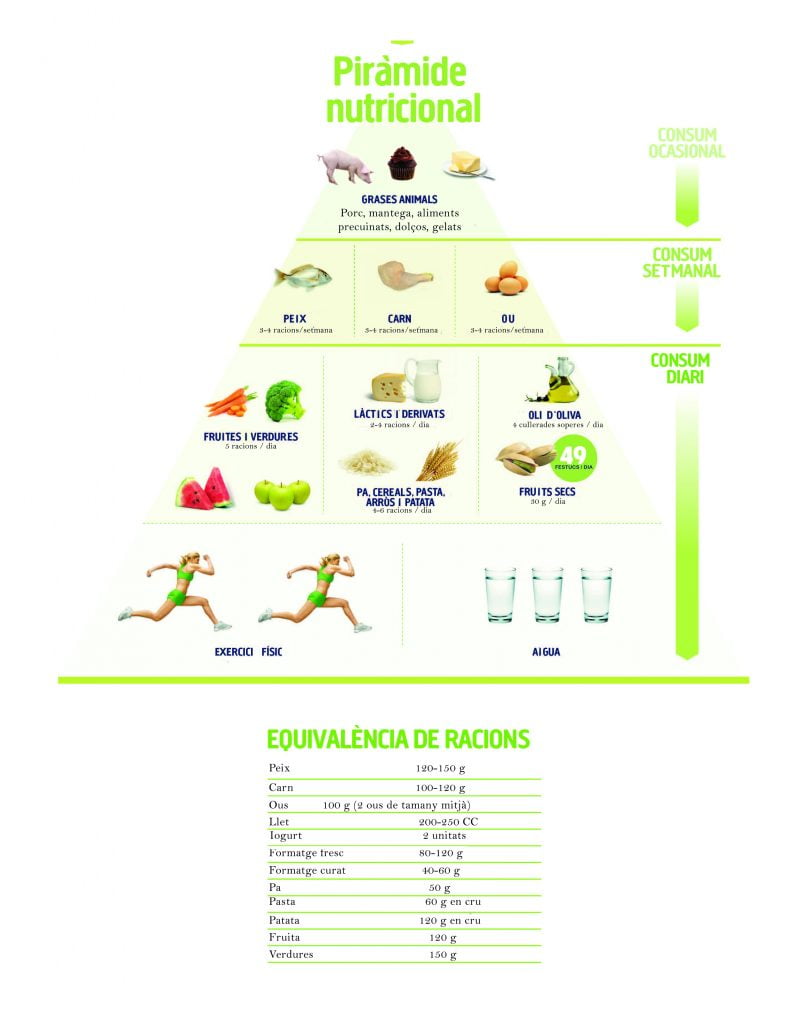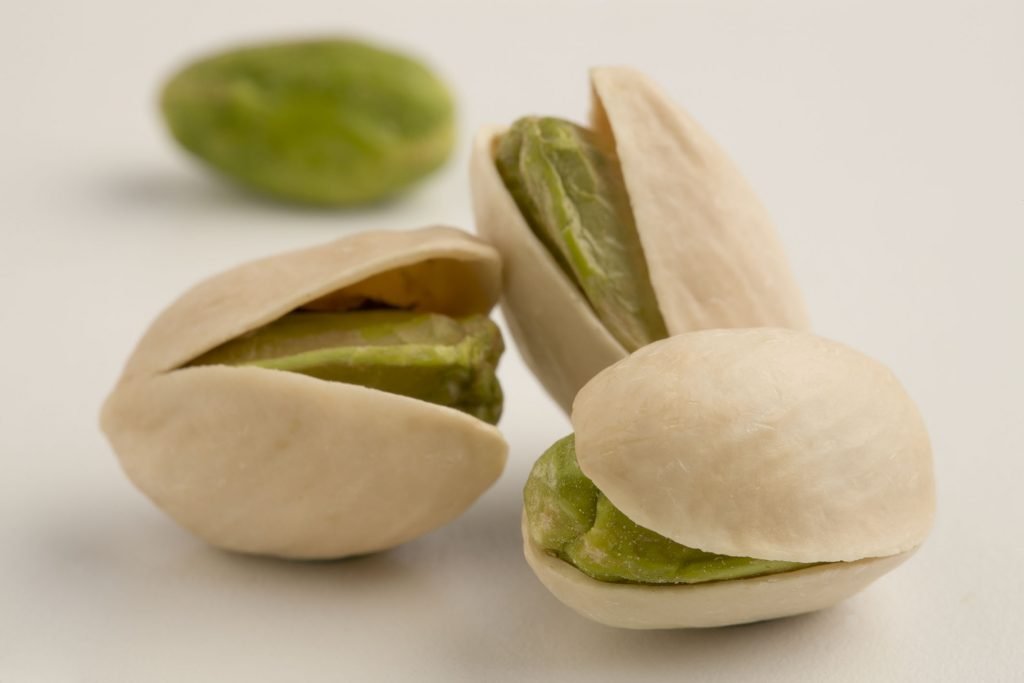Pistachios star in the new pyramid of the Mediterranean Diet, one of the healthiest in the world.
In the framework of World Pistachio Day, Dr. Ramon Estruch, director of the PREDIMED study (Prevention with Mediterranean Diet) and member of the Internal Medicine Service of the Hospital Clínic of Barcelona, announces that the pistachio is the protagonist of the new official pyramid of the Mediterranean Diet (DM), in the category of nuts, developed by the Mediterranean Diet Foundation. Estruch highlights the importance of including pistachios in this dietary pattern, while remembering that nuts are a fundamental part of DM and recommends consuming them daily.
Its complete nutritional profile and its importance in the Mediterranean Diet are the keys why the Mediterranean Diet Foundation has decided that pistachio should lead the category of nuts in the new pyramid of the Mediterranean Diet. In the presentation that took place on World Pistachio Day, at the Faculty of Medicine of the Hospital Clínic, the Dr. Estruch has highlighted the different advantages of the green nut, some of them unknown until now.
Pistachios to prevent eye diseases
Among the different healthy benefits of pistachio, Dr. Estruch makes an important contribution2 as the possible contribution of pistachio in the prevention of eye diseases. Remember that in Spain, close to a million people have visual health problems. In this sense, the expert highlights that "compared to other nuts, pistachio has a lower amount of fat and energy content, along with a high proportion of fiber (both soluble and insoluble), potassium, vitamins E and K, phytosterols and “certain carotenoids, such as lutein and zeaxanthin, are of great importance in the prevention of eye diseases.”
In this sense, he argues that, “apart from its protective effects on the cardiovascular system, probably related to its content of polyphenols and vitamin E, I am struck by the high content of two carotenoids, lutein and zeaxanthin, in pistachio; a fact that gives it an important protective action at the ocular level. These two substances are precisely responsible for the characteristic color of pistachios and their effectiveness has been noted in the prevention of phototoxic lesions and especially age-related macular degeneration, which is the main cause of blindness in the elderly. "The carotenoids in pistachios are the main components of macular pigment, a fact that would explain the protective role of these nuts in this important and worrying disease."
Cardiovascular diseases and other chronic pathologies
On the other hand, the Dr. Estruch states that “there are numerous epidemiological and intervention studies that demonstrate the beneficial effects of nuts for health and, especially, for the prevention of cardiovascular diseases and other chronic pathologies. Hence, numerous scientific societies, such as the American Society of Cardiology, recommend the regular consumption of nuts, within the framework of a healthy diet, such as the Mediterranean Diet.”
Furthermore, as indicated by Dr. Estruch3, “regular consumption of pistachios reduces blood pressure (by facilitating the synthesis of nitric oxide, a powerful vasodilator); facilitates endothelial function and reduces arterial stiffness (new vascular risk factors); improves the lipid profile (by reducing total cholesterol and especially harmful cholesterol – LDL-cholesterol); reduces the incidence of diabetes (as it is a food with a low glycemic index); and., it also promotes the growth of healthy bacteria in the intestinal flora (thanks to its high fiber content, which when fermented is converted into short-chain fatty acids, such as butyrate). All these mechanisms explain that people who frequently consume these nuts have a reduction of almost 20% in total mortality and a reduction close to 30% in the risk of suffering major cardiovascular complications, such as myocardial infarction, stroke or death. of cardiovascular cause.”
Yes, to eat between meals
He Dr. Ramón Estruch a study also highlights4 carried out with 1,000 American employees, in which it is observed that the consumption of 42 g of pistachios at mid-morning, a time known as Crunch Time, improves cognitive function, learning capacity, memory and recall, which leads to greater concentration at work.
In this sense, Estruch maintains that “it is interesting to check the beneficial effects of taking a tente-en-pie mid-morning and/or mid-afternoon. Classic nutritionists recommend eating five meals a day, including a mid-morning lunch and a mid-afternoon snack. According to what they say, this allows you to get to lunch or dinner without so much anxiety.”
The expert also points out that, “protective effects have been observed on mortality in general and on cardiovascular disease with the consumption of a serving of nuts (28 g) that is equivalent to 49 pistachios between 1 and 7 days a week. a 40% reduction in the risk of suffering from this disease. However, most studies in which the effects of pistachios have been demonstrated on lipid profile, hypertension and diabetes, for example, have used up to 3 and 4 times this dose (between 70 and 100 g per day). For practical purposes, our recommendation would be to consume a “handful” of pistachios every day, ideally mid-morning and/or mid-afternoon.”
The new pyramid of the Mediterranean Diet
The Mediterranean Diet Foundation has decided to adapt the traditional food pyramid to new lifestyles. The new scheme incorporates qualitative and quantitative elements in food selection. The new pyramid follows the previous guideline and places at the base the foods that should support the diet, such as pistachios; at the same time, it relegates to the upper, graphically narrower strata, those that should be consumed in moderation. Furthermore, it adds cultural and social indications, closely linked to the Mediterranean lifestyle from a concept of diet understood in a broad sense. It also reflects the composition and number of servings of the main meals.
The keys to the Mediterranean Diet
According to him Dr. Estruch5, “currently, DM is considered one of the healthiest diets both by organizations such as the World Health Organization (WHO), and by the majority of scientific societies around the world. This eating pattern is based on a high consumption of olive oil (preferably extra virgin), fruit, vegetables, legumes, fish, cereals (preferably whole grains) and nuts such as pistachios, almonds, hazelnuts and walnuts; in moderate intake of chicken, poultry, eggs and dairy products; in a low consumption of red meat; and, in a moderate consumption of wine, always with meals.
Likewise, the expert points out that "recent studies have shown with the highest level of scientific evidence that following the DM pattern lengthens life and reduces the incidence of the main chronic diseases such as cardiovascular diseases or diabetes, neurodegenerative diseases, as well as like numerous types of cancer.”
The origin of the Mediterranean Diet
In 1955, the American researcher Ancel Keys presented a study before the World Health Organization in which it related the type of diet of seven countries (United States, Greece, Holland, Italy, Japan, Finland and Yugoslavia) and the incidence of cardiovascular diseases.
Keys' study, titled “Coronary heart disease in seven countries,” was the first to verify that countries that consumed a greater amount of saturated fats had a greater risk of suffering from this type of disease; while the typical diet of Mediterranean countries (Italy and Greece) offered a protective effect. From this study, Ancel Keys coined the term Mediterranean diet present in the subsequent popular science books that he published with his wife, Margaret Keys.


